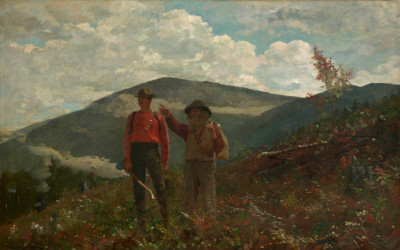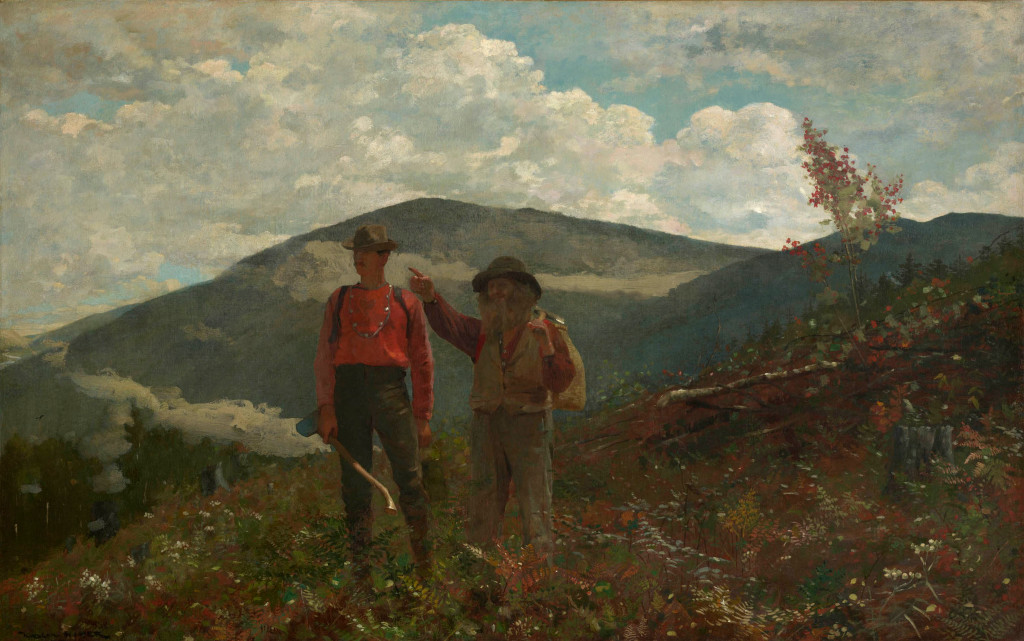The Two Guides, from 1877, is a memorable artwork by Winslow Homer which resides today at the Clark Art Institute, USA. It combines life in 19th century America along with the natural beauty of the nation's landscape.
Winslow Homer places two figures directly in front of us, with one pointing into the distance over our left shoulder. The other stares in the same direction. They are dressed in outdoor clothing, prepared for a long trail through this beautiful part of the country. The man to our right sports a bushy beard and appears to the leader of the two, perhaps underlined by his age and supposed wisdom and experience. Homer's decision to use oils for this piece allows him to incorporate plenty of detail upon their clothing, where as his watercolours would be more expressive and approximate in their content. The two figures are located just below the peak of a mountain in the far distance, which serves to balance the composition. Several other peaks appear to its side, to support the main focal point. In the foreground we then find a flurry of plants, perhaps ferns, which bring colour to the scene alongside with reflecting some of the bright light.
The Two Guides is 97cm in width and 62cm in height, approximately, and follows the standard ratio that one would expect from a landscape painting. The piece was acquired by the Sterling Clark Foundation in 1916 and later on it was passed over to the institution that they set up. This particular piece, from the 1870s, was typical of American art from that decade in which simpler, happier content was taken on as the country looked to move on after the civil war. Homer himself had become heavily involved within the conflict, capturing scenes from the bloody period, and would surely have been happy to move on to other themes. His bright tones add to this feeling of people returning to their lives. This piece is detailed, with the clouds being well crafted, as is the display of plants in the foreground. Homer would have spent a considerable time on this piece, and most likely would have made sketches within the environment before finishing the artwork from the comfort of his studio.
The painting was most likely constructed and arranged within the Adirondack Mountains of New York and Homer would produce several artworks here. He started to appreciate its different seasons over time and knew precisely the right time to visit. Within this artwork we appear to moving from summer into autumn, as judged by the tones used on the plants as well as the clothing being worn. Some have suggested that the tools and attire worn by these guides would indicate that they were preparing a suitable path for others to follow at a later date, such as hikers or hunters. Although seascapes would become the artist's main genre in later life, landscape views such as this, with figurative additions, also appeared fairly regularly within his career and are also highly regarded today. He remains one of the most famous American painters of all time, particularly from the 19th century.





